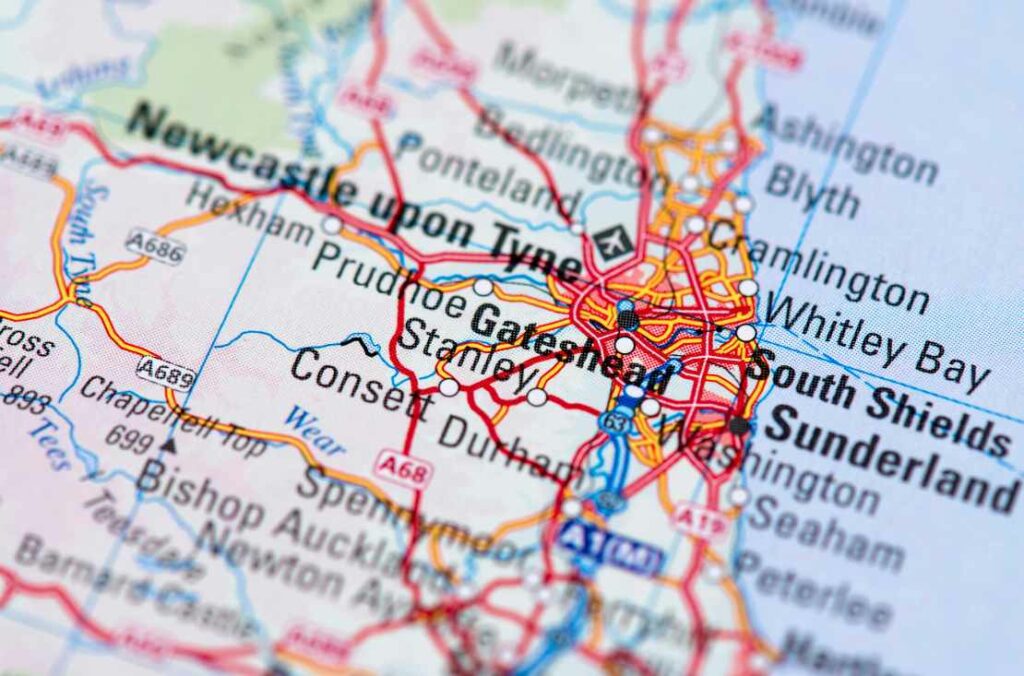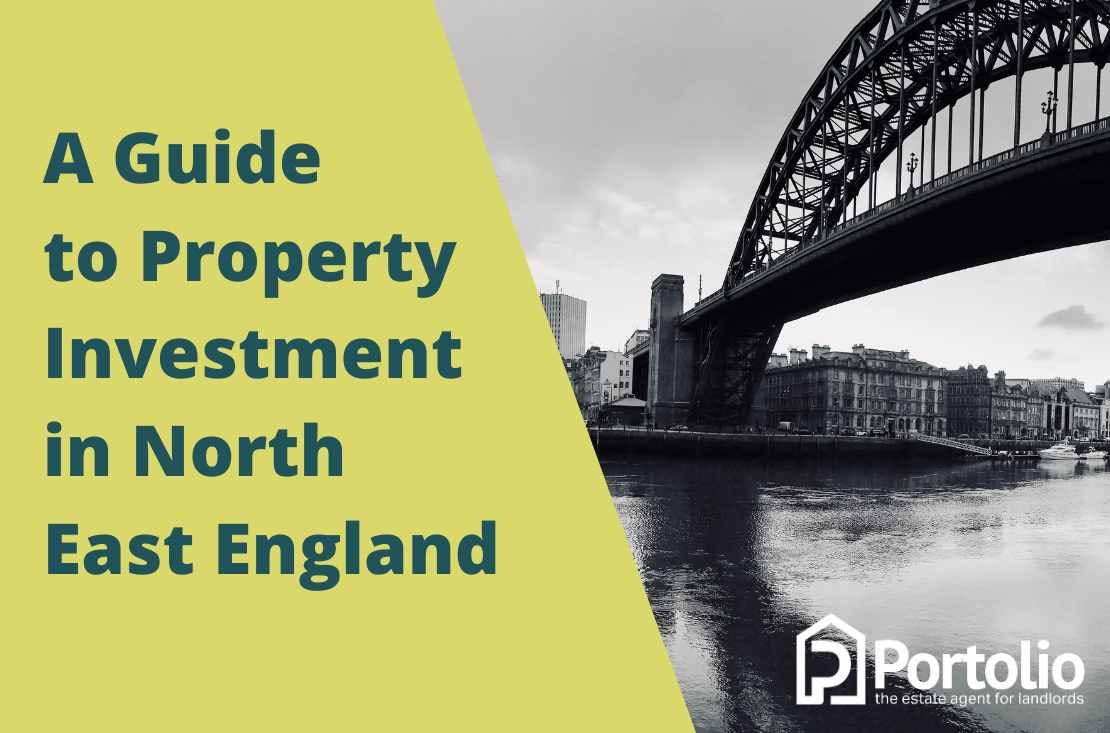Curious about property investment in North East England?
Low average prices and good rental returns make the north east an ideal starting point if you’re considering a buy-to-let property investment. It is also one of the most stunning regions of England – if you haven’t visited yet, you really should.
It’s not all monasteries and vikings though, with a long history of heavy industry, shipbuilding and mining, it’s a very diverse region, and as a result, so is the property market.
As a buy-to-let property professional I’m going to guide you through the places and opportunities that make up this fascinating and dramatic region.
North East England: an introduction
The NE is a unitary authority formed in 1994. It stretches from the Scottish Borders at Berwick upon Tweed, down as far as Bishop Auckland and Sedgefield, and encompasses the Northumberland National Park to the north-west.
It’s a mutli-faceted region, from the dreaming spires of Durham university to the ghosts of the steel-making industry in Consett and the abandoned coalfields.

It has two airports near Newcastle and Darlington, a number of ports servicing the North Sea routes into Europe and extensive rail and road links to the north and south.
The region is home to five universities, with both Durham and Newcastle being members of the Russell group which comprises and represents a number of public research universities.
It has an ancient religious tradition, with the Holy island of Lindisfarne being one of the best-known ancient religious sites in the UK. The Venerable Bede, regarded as one of the most important Christian scholars, worked in Jarrow and Wearmouth.
Property investment in North East England
The property market in North East England is as varied as its history. Property prices are equally disparate, although they tend towards the lower end of the English market as evidenced in this extensive piece.
The three most populous areas are Newcastle upon Tyne, Middlesbrough and Sunderland. Newcastle and Sunderland have city status, Middlesbrough doesn’t.
We’ll look at these three areas in more detail and cast our attention a little wider if necessary.
Newcastle upon Tyne
The people of Newcastle will be only too happy to tell you how great their city is, and in fairness, they’re not wrong! It’s a vibrant city, with a history stretching back to Roman times.
Famous for its nightlife and the residents’ complete disdain for weather-appropriate clothing, it is an exciting and interesting English city with much to recommend it.
In terms of housing, it shows a typical mix of owner-occupation, social-rented and private rented sector housing.
Based on the 2021 census figures provided by the Office for National Statistics, Newcastles’ housing breaks down as follows:
Owned outright: 30,707 (25%)
Mortgage or shared ownership: 30,349 (24.7%)
Social rented: 33,476 (27.3%)
Private rented or rent-free: 28,265 (23%)
Relatively low property prices and a constant demand for private rented homes mean that potential yields in the city can be attractive to buy-to-let investors. Like anywhere else, these vary, depending upon specific areas.
The average house price across the city is £195,000, however within the city centre the average is £162,300. That makes city centre properties attractive as buy-to-let opportunities, and yields around the waterfront area average 6.8%.
Home.co.uk provides a useful summary of the potential rental market in Newcastle. Newcastle is home to two universities and has a student population of around 23,000. That alone makes the city an attractive investment opportunity.
Remember that if you are contemplating investing in a House in Multiple Occupancy (HMO), you will need to apply to Newcastle City Council for a licence. If you are minded to create a HMO, you may need to apply for planning permission first.

Middlesbrough
Once the iron and steel capital of the world, Middlesbrough has, like so many centres of traditional heavy industry, seen that crown fall away as cheaper alternatives from abroad priced them out of the global market.
These days, the not-quite-a-city in North Yorkshire is busy reinventing itself as a centre for high-tech industries, encouraged by Teesside University which is based in the town and is gaining a reputation for digital animation amongst other disciplines.
The university currently has some 19,000 students which is always a bonus for the private rented sector. If HMOs interest you, check which local authority your property falls under as rules can vary from one to another.
Many of the spin-off startup businesses from the university have found a home in Middlesburgh’s Boho zone, part of the town’s ongoing effort to attract new business and technologies.
The 2021 census figures give the following information for Middlesbrough:
Owned outright: 17,224 (28.6%)
Mortgage or shared ownership: 16,243 (27%)
Social rented: 14,006 (23.2%)
Private rented or rent-free: 12,792 (21.2%)
Like other areas in the north-east of England, Middlesbrough has the potential to deliver a healthy return for those willing to invest in buy-to-let property. As with Newcastle, property prices are at the lower end of the English average.
Rental yields can be good, depending upon postcode. According to PropertyInvestmentsUK: “Some of the best yields in the UK are to be had in TS1 at 9.45% and TS3 at 7.66%”.
If you’re looking at longer-term investment, although prices are generally lower than elsewhere in the UK, they are rising. Allied to the prospect of respectable rental income, this makes Middlesbrough worthy of consideration when investing.
Sunderland

Like Newcastle and Middlesbough, Sunderland has had to reinvent itself as heavy industries dwindled and left, seeking cheaper opportunities overseas. Consequently it has encouraged growth in a number of key sectors.
These include advanced manufacturing, financial, professional and business services and software development along with digital and creative industries. The city council continues to try and make the area attractive to inward investment.
This aim is abetted by Sunderland University and other institutions, with the city claiming that “Over 52,000 students…are studying STEM subjects, which feeds into our community of fresh and experienced talent for tech and digital sectors.”
The 2021 census gives us the following information about the housing market in Sunderland:
Owned outright: 38,312 (31.4%)
Mortgage or shared ownership: 33,164 (27.1%)
Social rented: 32,554 (26.6%)
Private rented or rent-free: 18,147 (14.9%)
While the overall size of the housing market compares very closely to that in Newcastle, there are markedly fewer PRS properties in Sunderland, at least according to the census returns.
That said, like both Newcastle and Middlesbrough a combination of relatively low property prices and both a sizable working and student population makes Sunderland a very attractive property investment opportunity.
Rental yields span a range from 9% to around 5.7%, although you may realise as much as 7.6% in the city centre.
Like Middlesbrough, Sunderland and the area surrounding it is striving to attract new investment and new residents, with a number of incentives being offered to attract industries to the area.
All of these factors make Sunderland, Middlesbrough and Newcastle highly attractive to anyone looking for a property investment in North East England.
Advice from the property pros

The picture which emerges from these three major population centres in the North East holds good, by and large, right across the region. Property investment in North East England is currently delivering some of the best returns.
This is due to a combination of low regional property prices and high demand for rental properties especially amongst students and younger working people.
All of the cities and towns highlighted offer potentially good returns to anyone looking for a property investment in the north east. As ever, different postcodes and different areas will deliver different returns, so seek advice.
John Forth, who has joined us here at Portolio, has decades of experience in the property market over the border, and that experience is available to you to help plan your next investment.
He’ll also be able to advise you about relevant legislation and local council requirements throughout the north-east.
In summary…
The buy-to-let investment market in North East England is one of the most vibrant in the country at present and we would strongly recommend that you take a look at whether it might be the right next step for you.
We’re always happy to make time to discuss individual circumstances, and John now adds his extensive knowledge of the property investment market south of the border.
So, if you’re looking to expand your portfolio, or seeking a property investment in North East England with the potential for a great return, we would be delighted to make an appointment to explain how we can help you achieve those goals.
As ever, thank you for reading and I hope it’s been both useful and enlightening!
Written by Ross MacDonald, Director of Sales & Cofounder of Portolio
Get in touch on 07388 361 564 or email to [email protected]



Comments